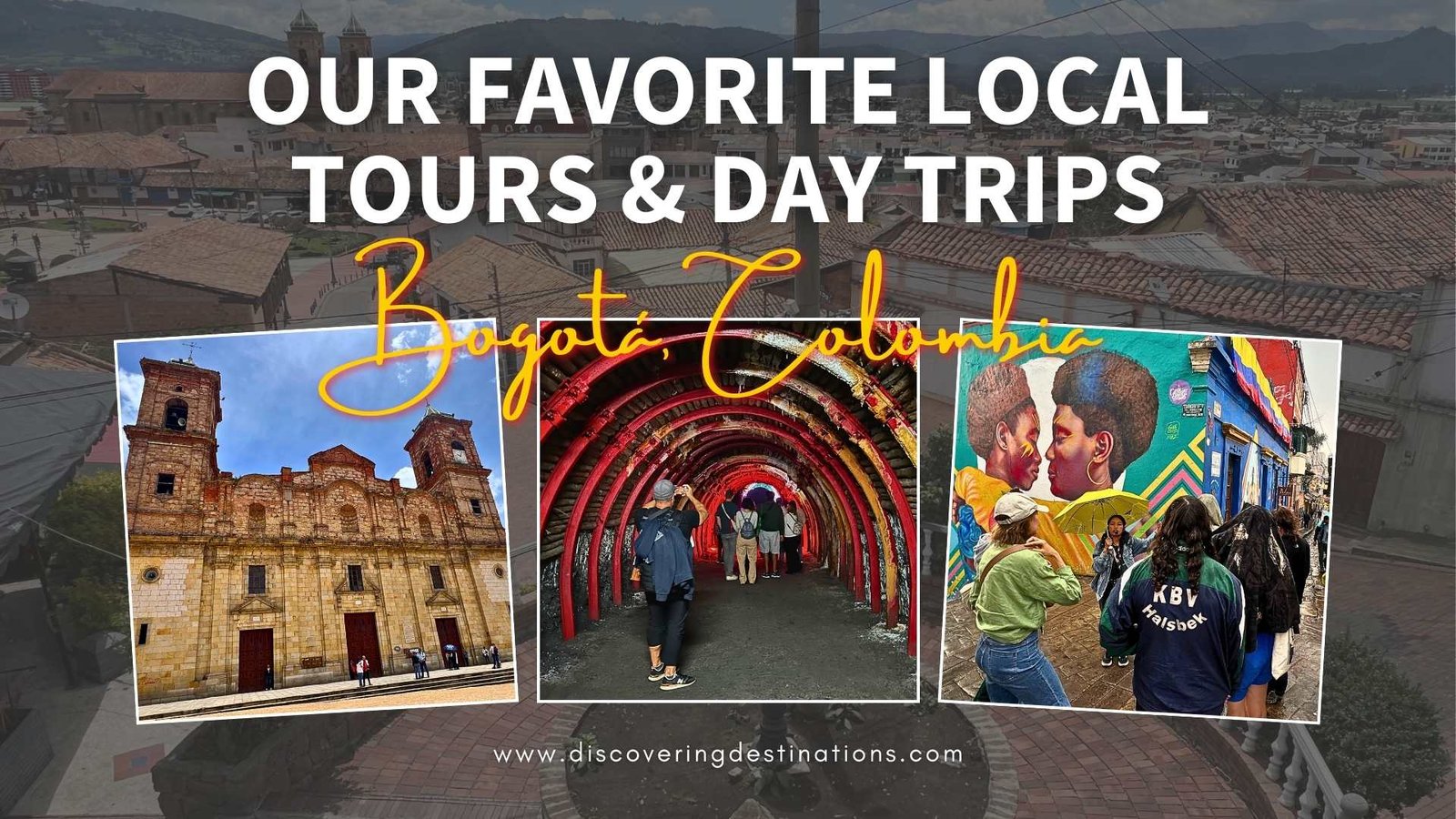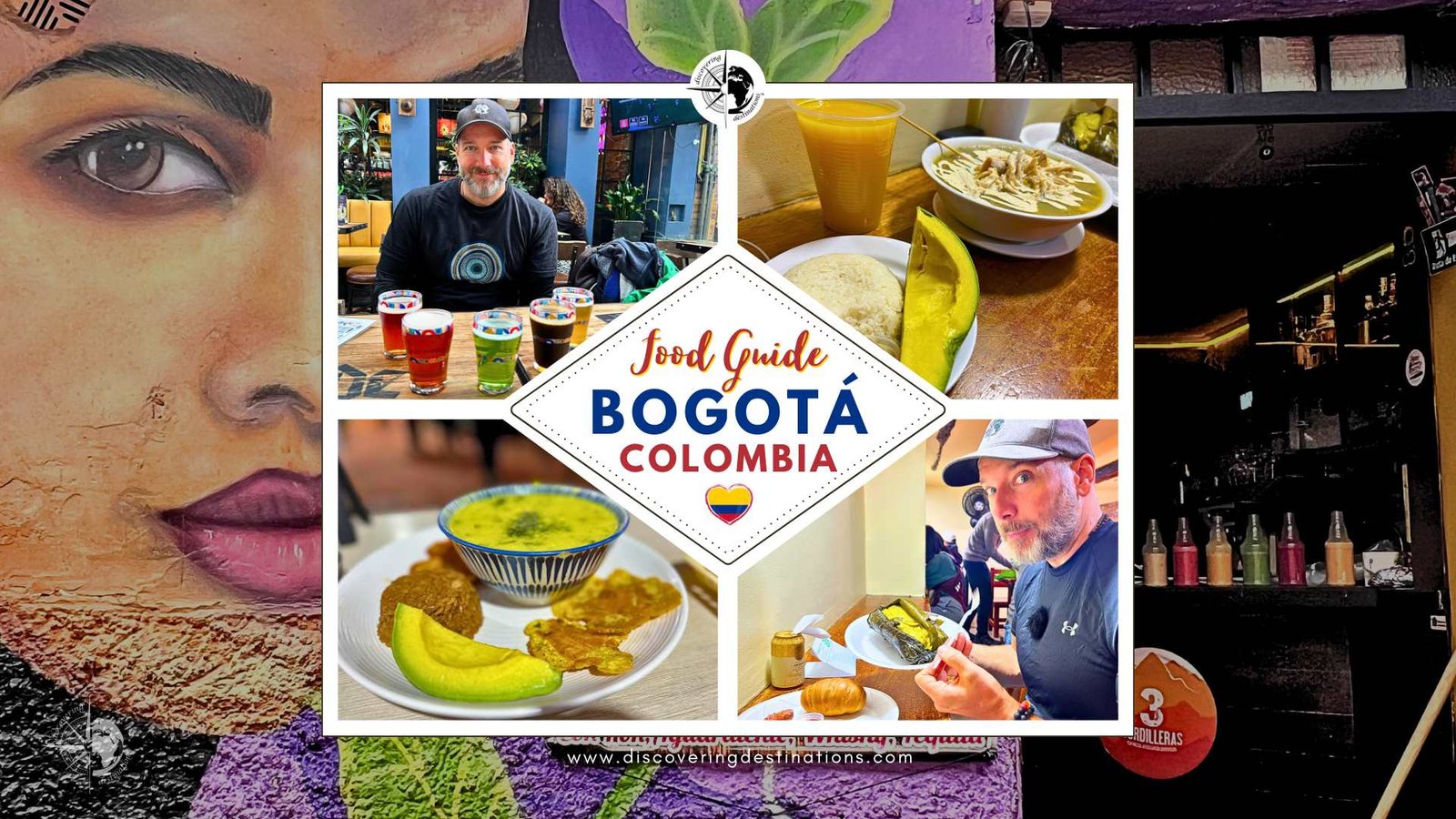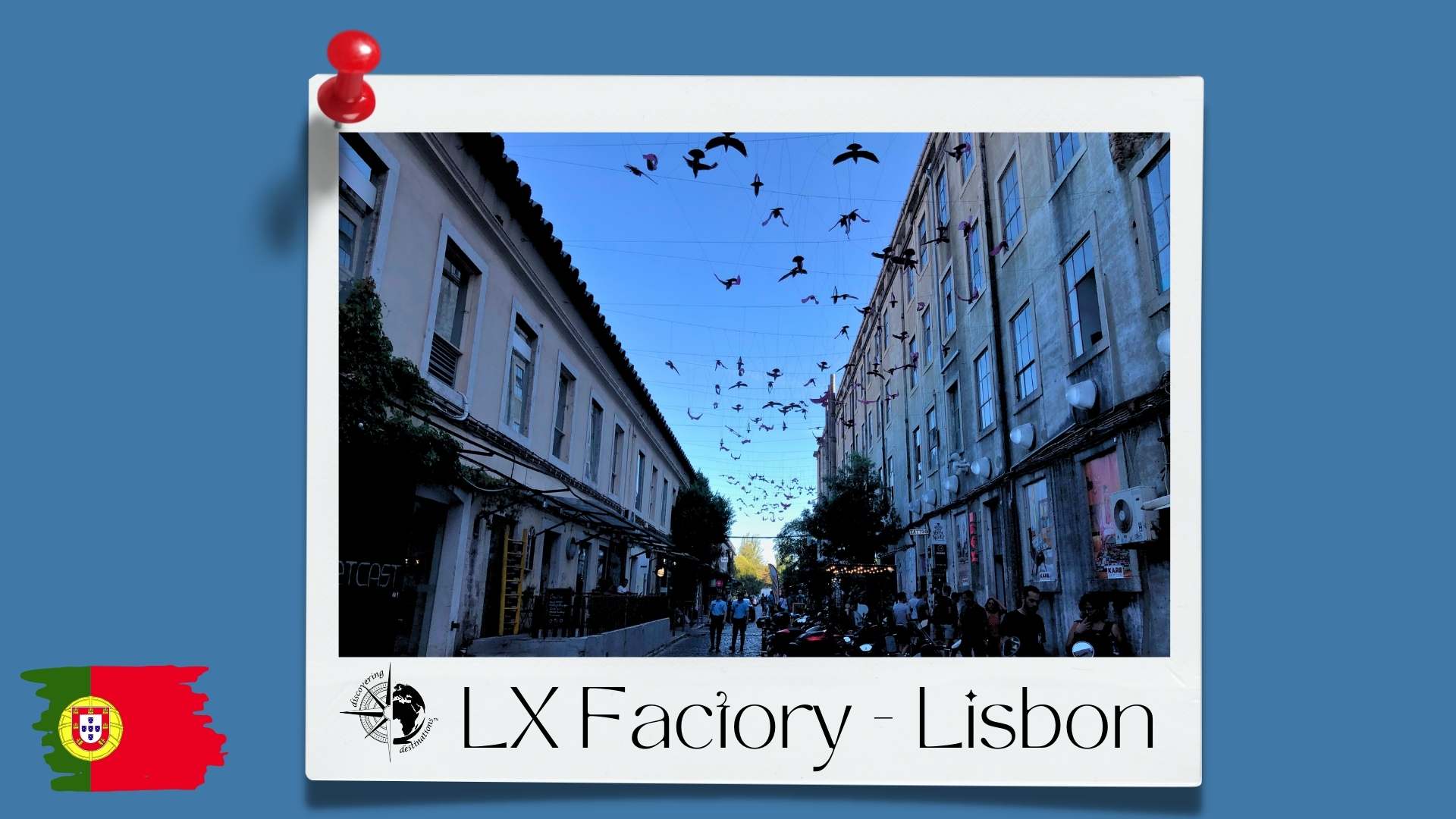Experience an unforgettable and safe journey through the heart of São Paulo by joining the São Paulo Free Walking Tour. Back in 2017, we had our first amazing experience with this tour, and on April 13, 2024, we embarked on it once again. This updated adventure gave us the chance to rediscover the charm of São Paulo’s Old Town, uncovering new details and tips for future visitors.
Table of Contents
Toggle- Why Join the São Paulo Free Walking Tour?
- Private and Closed Group Tours in São Paulo
- Highlights of Our São Paulo Free Walking Tour 2024
- 1. São Paulo Free Walking Tour Starting Point: Praça da República
- 2. São Paulo Old-downtown – Visiting historic and famous buildings nearby
- 3. Paróquia Nossa Senhora da Consolação, São Paulo
- 4. Mário de Andrade Library, São Paulo
- 5. Teatro Municipal de São Paulo
- 6. Praça Ramos de Azevedo, São Paulo
- 7. Paróquia São Francisco de Assis, São Paulo
- 8. Padaria Santa Tereza, the oldest bakery in Brazil
- 9. Sé Cathedral and Praça da Sé, São Paulo
- 10. Pateo do Collegio, São Paulo
- 11. Banco do Comércio e Indústria de São Paulo
- 12. Martinelli Building, São Paulo
- 13. Mosteiro de São Bento, São Paulo
- Where to eat at Historic Center of São Paulo
- Travel Essentials for the São Paulo Free Walking Tour
- Staying Connected: Internet in Brazil
- Conclusion: Discovering São Paulo’s Historic Charm
- Discovering Destinations: Travel Tools & Planning Tips
In this blog, you’ll find:
- Tips for Getting to São Paulo’s Old Town to join the SP Free Walking Tour.
- Highlights of the Best Places to Visit in the Historic Center of São Paulo with the tour.
- Our Insider Tips to explore even more places after the walking tour.
- Where and What to Eat in São Paulo’s Old Town, including a visit to the oldest bakery in São Paulo.
- Safety Tips and Essential Advice you can’t afford to miss.
If you’re curious to explore São Paulo’s most iconic landmarks and hidden gems with us, keep reading for all the highlights, travel tips, and insights from our 2024 adventure!
And don’t forget to check out our vlog for even more visuals and ideas: Watch Our Vlog Here.
DISCLOSURE NOTE: 👉 Our Blog Post contain few affiliate links to products We personally use, trust, and suggest. These help support our efforts in creating valuable and informative content.
When you make a purchase or engage with our affiliate partners through these links, we may earn a small commission at no extra cost to you. Your support enables us to continue producing quality content and exploring new topics. Thank you for being a part of our journey and helping us grow! Sharing is caring ! Click here to learn more.
Why Join the São Paulo Free Walking Tour?
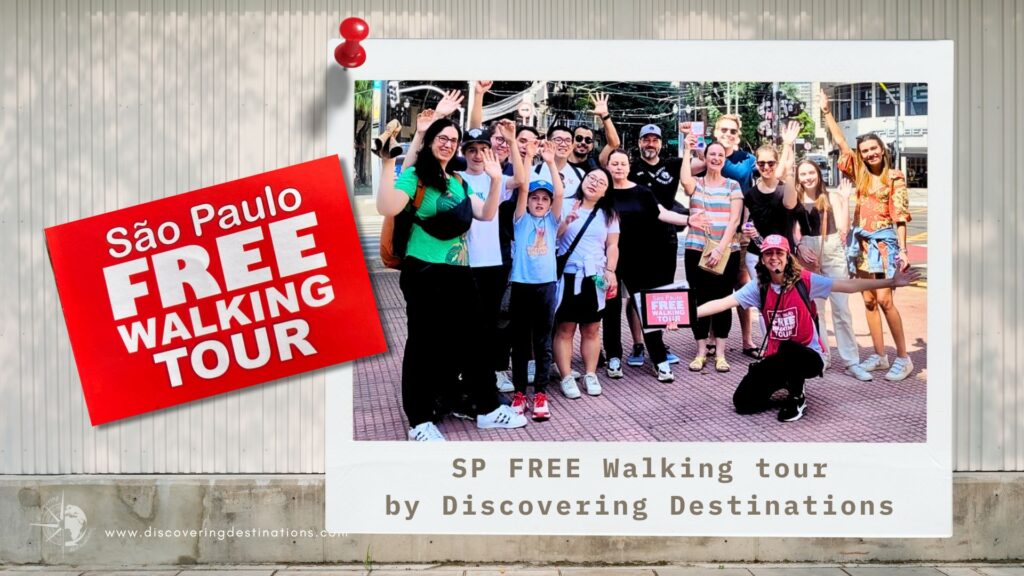
Here are just a few reasons why this tour should be on your São Paulo travel bucket list:
- Budget-Friendly: The tour is free to join, with tips appreciated based on your experience.
- Local Expertise: Guides are passionate about São Paulo and happy to share its history, culture, and hidden gems.
- São Paulo Tourism Map: Participants receive a detailed map of São Paulo, including discount coupons for restaurants and other attractions.
- Comprehensive Itinerary: Visit São Paulo’s top landmarks, historic buildings, and cultural highlights in just a few hours.
- After-Tour Tips: Get recommendations for additional places to explore and suggestions for revisiting landmarks for a deeper dive.
- Interactive Experience: Guides are open to answering questions and providing tailored advice for your visit.
How Does the São Paulo Free Walking Tour Work?
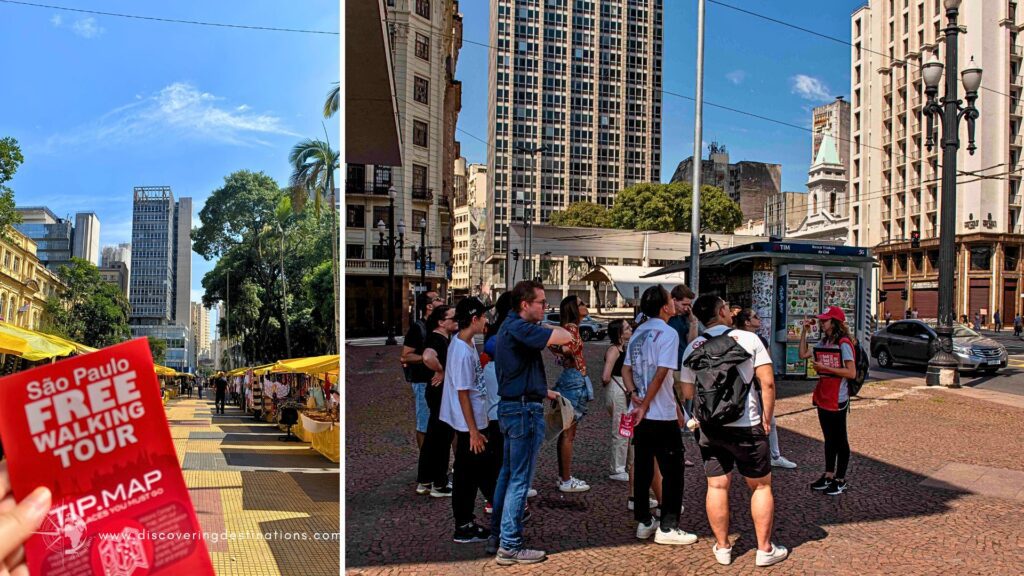
The São Paulo Free Walking Tour is led by a group of passionate locals who guide you through the historic center of São Paulo, showcasing its highlights, historic buildings, and vibrant culture. Tours are offered in both English and Portuguese, making it accessible to international travelers.
We’ve taken the English tour twice to accommodate Serge, who is Canadian, and we’ve met fellow travellers from all over the world, including Japan, Australia, Ireland, the United States, Europe, and South America. This diversity makes the experience even more fun and enriching!
To join the official São Paulo Free Walking Tour, you’ll need to book directly on their official website for your preferred date and time. After booking, you’ll receive detailed information about the meeting point, typically Praça da República.
Pro Tip for São Paulo Free Walking Tour
Participants are encouraged to arrive at least 30 minutes early to complete a quick registration and receive instructions. However, if your tour is scheduled for a Saturday or Sunday, we recommend arriving at least one hour earlier to explore the craft stalls at Praça da República, which are open on weekends, before the tour begins.
How to Get to Praça da República, São Paulo
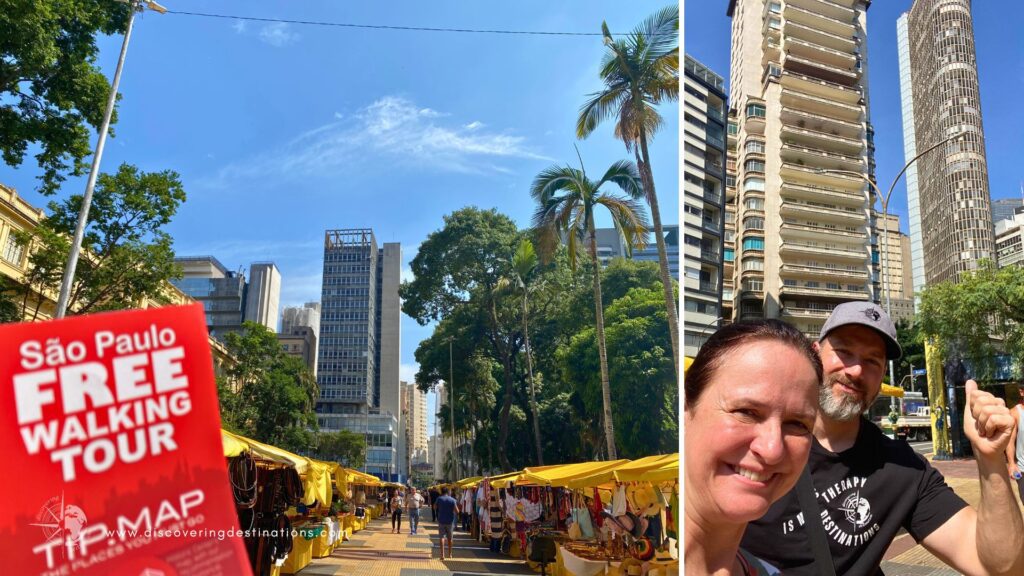
Here are some options for reaching the meeting point:
- By Metro: Take Line 3 (Red) or Line 4 (Yellow) to República Station. The square is just a short walk from the station. Click here to check the São Paulo metro lines map.
- By Bus: Several bus routes pass through República, so check your local schedule for options.
- By Uber or Taxi: For added convenience, we opted for an Uber to Praça da República, which was affordable and quick.
Important: Make sure to confirm the meeting point for the Old Downtown São Paulo tour with the SP Free Walking Tour group or by checking their official website, as it may change.
SP FREE Walking Tour – How Much Does It Cost?

As the name suggests, the São Paulo Free Walking Tour is FREE of charge!
While there’s no fixed price, participants are encouraged to tip the guides at the end of the tour as a gesture of appreciation.
Your contribution helps support their incredible work, ensuring they can continue providing this valuable service and making São Paulo a safer and more accessible destination for travellers.
With this in mind, remember to bring some cash and small change to tip the guides based on your experience and gratitude!

Our Recommendation for the São Paulo Free Walking Tour
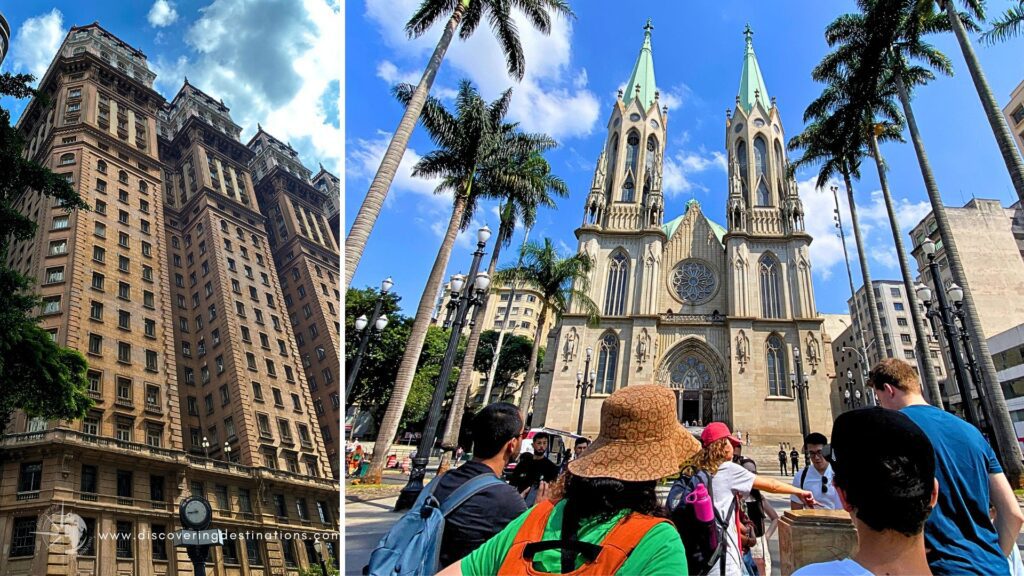
Having taken the São Paulo Free Walking Tour twice, we can confidently recommend it.
We’ve always felt safe, received invaluable tips, and gained a deeper understanding of São Paulo’s history while meeting travellers from around the globe.
It’s worth noting that we’re not affiliated with the São Paulo Free Walking Tour, and we don’t receive any compensation for recommending it. We’re simply sharing our genuine experience with you.
For more information, visit the official São Paulo Free Walking Tour website here.

Stay Connected with a Reliable eSIM for São Paulo
Staying connected in São Paulo is essential for using Google Maps, booking Ubers, finding restaurants, and more.
We highly recommend Airalo eSIM—we’ve used it multiple times, and it’s easy to install, doesn’t require a Brazilian ID like local SIM cards, and is super reliable (even in the countryside of São Paulo!).
Click the widget below to learn more and get connected hassle-free!
Private and Closed Group Tours in São Paulo

For a more personalized experience, consider booking a private or closed group walking tour to explore the very best of São Paulo at your own pace. These tours are ideal for families or travelers seeking a more exclusive and intimate experience with fewer participants.
We recommend exploring options on GetYourGuide, where you’ll find verified reviews, detailed availability, and the added convenience of hotel pick-up for many tours.
Additionally, some private tours dive deeper into São Paulo’s highlights, such as Paulista Avenue or the famous Mercadão de São Paulo (São Paulo Municipal Market).
These are fantastic options for experiencing more of the city in a single day, as these stops are usually not included in the Free Walking Tour. Many tourists have left glowing reviews for these experiences!
We’ve used GetYourGuide for private tours in destinations worldwide and can confidently recommend their services. As affiliates, we may earn a small commission if you book through our link—at no extra cost to you.
Explore São Paulo your way and make unforgettable memories!
Highlights of Our São Paulo Free Walking Tour 2024
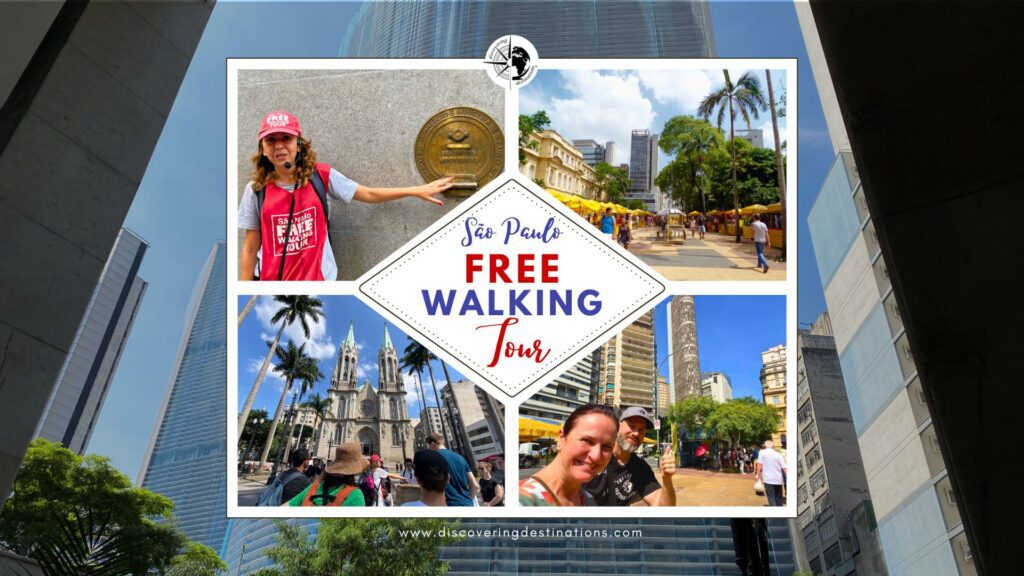
The SP Free Walking Tour is one of the best ways to dive into São Paulo’s rich history, vibrant culture, and iconic landmarks. During our April 2024 tour, we revisited familiar stops and discovered new local treasures.
If you’re planning to join, always confirm the route and meeting point on the tour’s official website to avoid starting at the wrong spot.
Here are some of the highlights of our 2024 tour:
1. São Paulo Free Walking Tour Starting Point: Praça da República
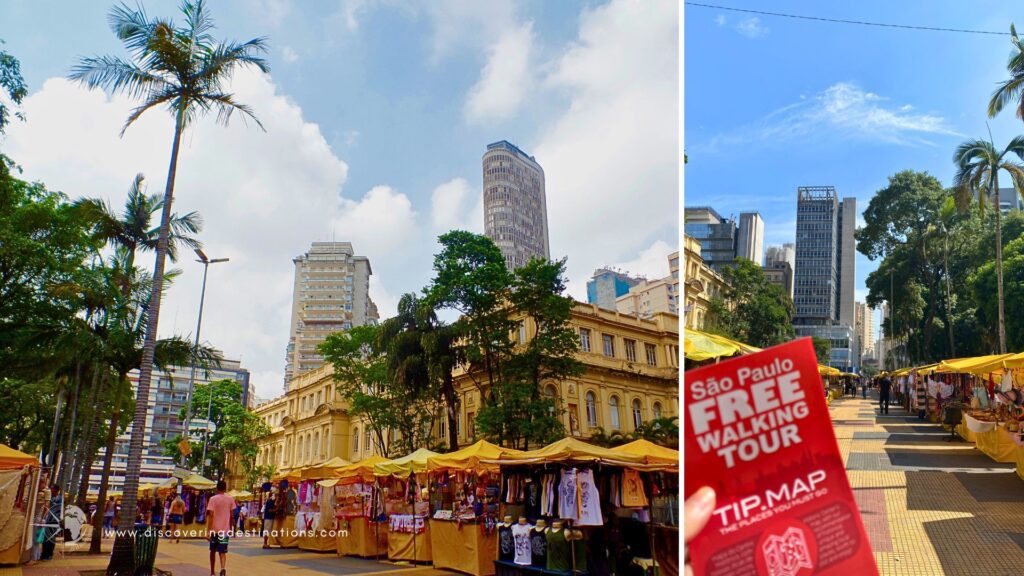
We began our journey at the historic Praça da República. The SP Free walking tour group usually is around the Touristic info kiosk where you must register yourself and get instructions for the tour.
If you booked your tour during Saturdays and Sundays, we recommend you arrive a little earlier in order to check the “Feirinha da Praça da República or Republic’s Market” which happens on Saturdays and Sundays from 8am to 5pm offering Brazilian crafts and street food.
2. São Paulo Old-downtown – Visiting historic and famous buildings nearby
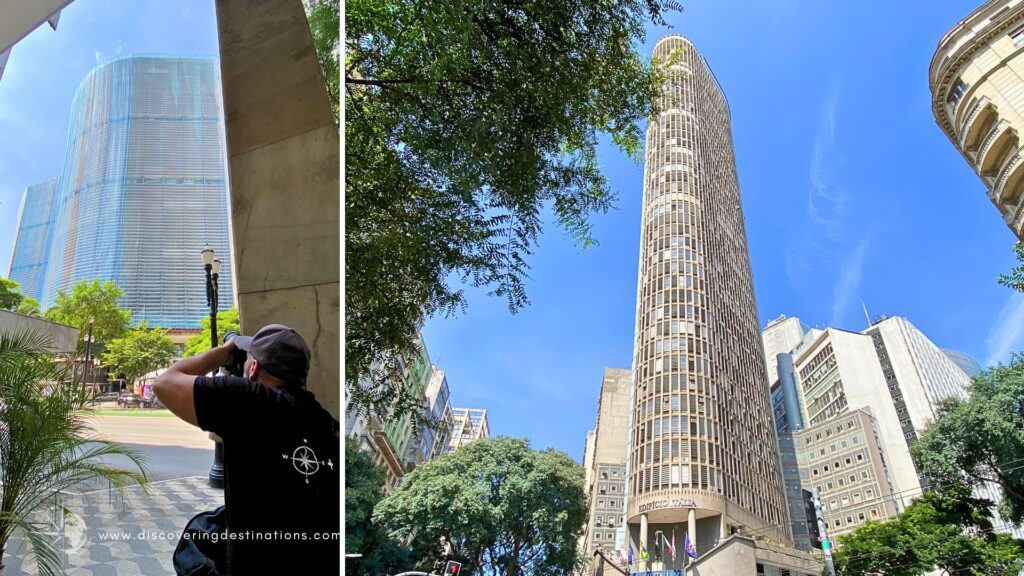
After Praça da República our tour continued through the streets nearby where the guides highlight some of the historic and famous buildings located in that area such as:
- Edifício Itália: Considered a postal card of São Paulo, Edifício Itália today is considered the second biggest building in São Paulo city and one of the biggest from Brazil. Founded in 1965, it’s considered a postal card of São Paulo city and it’s protected by Patrimônio Histórico. Also it’s famous for the Terraço Itália, that is a restaurant located in the top of the building and allows a 360oC view from São Paulo city. You will also find the bar of Terraço Itália, which one (Eli) has already being and loved it.
- Edifício Copan: Located at Avenida Ipiranga, 200 in São Paulo, Edifício Copan is a landmark of modern Brazilian architecture designed by Oscar Niemeyer in the 1950s. Standing at 118 meters with 32 floors, it houses 1,160 apartments and over 70 commercial establishments, including restaurants and shops. The building’s distinctive sinuous façade reflects Niemeyer’s signature style, emphasizing curves over straight lines. Originally intended to commemorate São Paulo’s Fourth Centenary, construction began in 1952 and concluded in 1966. Today, Edifício Copan remains a vibrant vertical community, symbolizing the city’s dynamic urban life.
3. Paróquia Nossa Senhora da Consolação, São Paulo
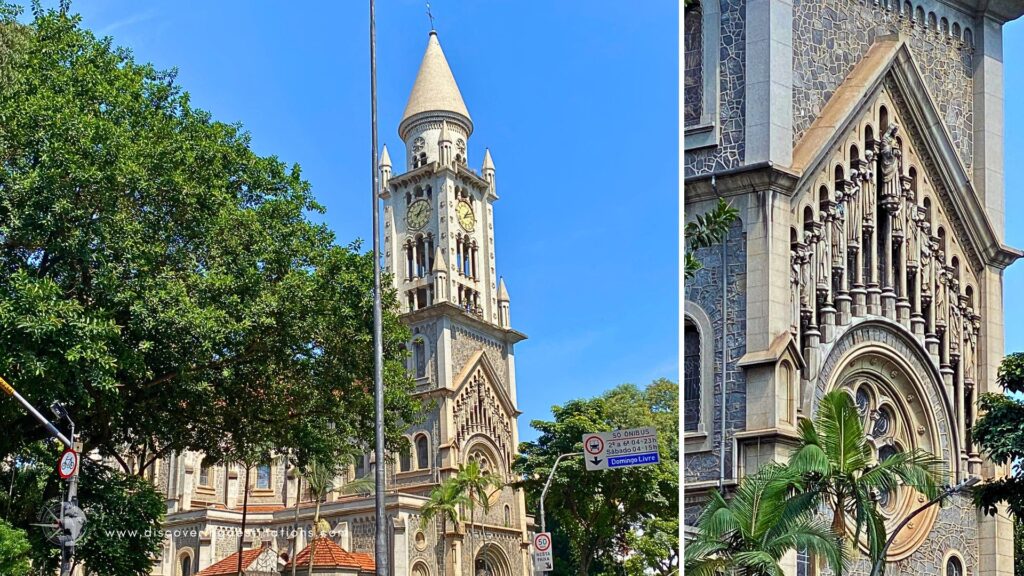
Unfortunately we just passed in front of Paróquia Nossa Senhora da Consolação, however it’s a beautiful church if you want to go back and check it out.
The Paróquia Nossa Senhora da Consolação, located in São Paulo’s Consolação neighbourhood, was founded in 1799 on what is now Rua da Consolação.
The original church was constructed using rammed earth, a common technique at the time, funded by donations from devotees and supported by Bishop Dom Mateus de Abreu Pereira.
A notable feature of the church is its 75-meter-high tower, one of the tallest in the city, contributing to São Paulo’s architectural heritage.
Today, the Paróquia Nossa Senhora da Consolação continues to be a significant religious and cultural landmark, reflecting over two centuries of history and community service in São Paulo.
4. Mário de Andrade Library, São Paulo
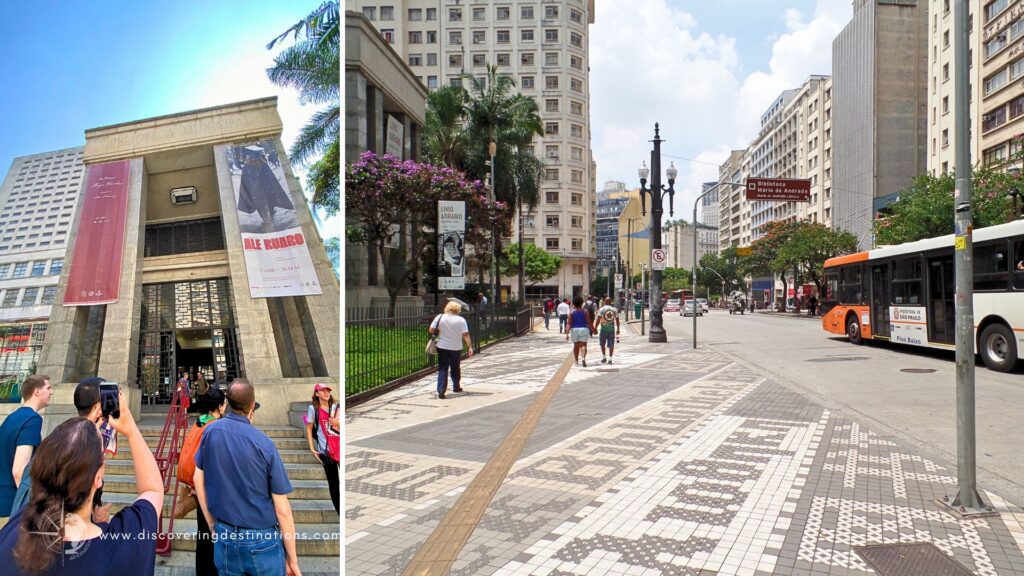
After we continue to walk torwards the Library Mário de Andrade which is the biggest public library of São Paulo city and the second biggest from Brazil.
Founded in 1925, you will find a huge diversity of books, historic news, multimidia material, maps with around 3,3 millions items. The building was projected by the architet fren Jacques Pilon.
A cool detail is about the sidewalk in front of the Biblioteca Mário de Andrade, which pattern is inspired by traditional Portuguese-style stone pavements, commonly found in Brazil.
This type of sidewalk, known as calçada portuguesa, uses black and white stones arranged in intricate geometric or wave-like patterns, creating a visually striking and elegant effect.
The sidewalk adds to the charm of the library’s historic building and is a popular spot for photos, enhancing the cultural and architectural experience of visiting the Biblioteca Mário de Andrade. It reflects the blend of São Paulo’s heritage and modern urban aesthetics.

5. Teatro Municipal de São Paulo
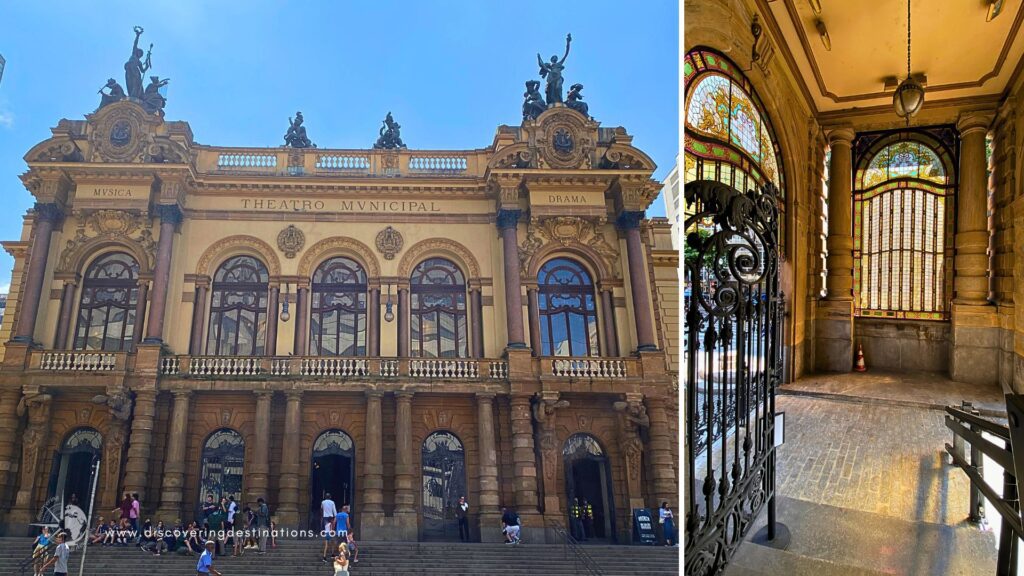
Then we head to the famous historic building of Teatro Municipal de São Paulo, that in our point of view was one of the most beautiful and well maintained.
The Theatro Municipal de São Paulo, inaugurated in 1911, is a cornerstone of the city’s cultural heritage. Designed by architect Ramos de Azevedo, it showcases an eclectic style with influences from Baroque and Renaissance architecture.
The theater gained historical prominence as the venue for the Week of Modern Art in 1922, a pivotal event that revolutionized Brazilian art.
Today, the theater hosts a diverse array of performances, including opera, ballet, and concerts. Visitors can check the official website for the latest event schedules and ticket information.
For those interested in exploring the theater’s rich history and architecture, free guided tours are available. These tours offer insights into the building’s design and its cultural significance. It’s advisable to consult the official website for tour schedules and booking details.
Extra Tip: Bar dos Arcos – São Paulo
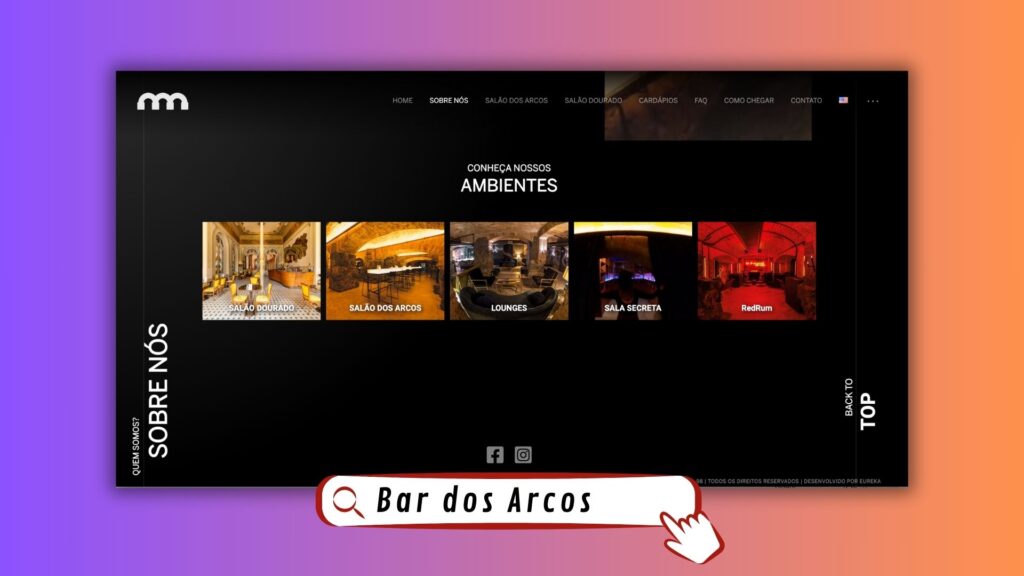
Bar dos Arcos, located beneath the Theatro Municipal de São Paulo, offers a unique dining and nightlife experience in a historic setting.
The bar is located in the theater’s underground galleries, featuring illuminated counters and century-old arches.
Its ambiance, inspired by ‘The Shining,’ is both mysterious and inviting.
Guests can enjoy signature and classic cocktails alongside a menu catering to vegans and meat lovers.
The venue includes distinct areas like Salão dos Arcos and Salão Dourado, each offering a unique experience.
Bar dos Arcos – Open Hours
According to their official website, the bar operates from Tuesday to Saturday, with varying hours:
- Tuesday and Wednesday: 6:00 PM to 1:00 AM (last entry at midnight)
- Thursday and Friday: 6:00 PM to 2:00 AM (last entry at 1:00 AM)
- Saturday: 6:00 PM to 3:00 AM (last entry at 2:00 AM)
It’s advisable to arrive early, as entry is on a first-come, first-served basis. For more information, including menu details and special events, visit their official website: Clicking here.
6. Praça Ramos de Azevedo, São Paulo
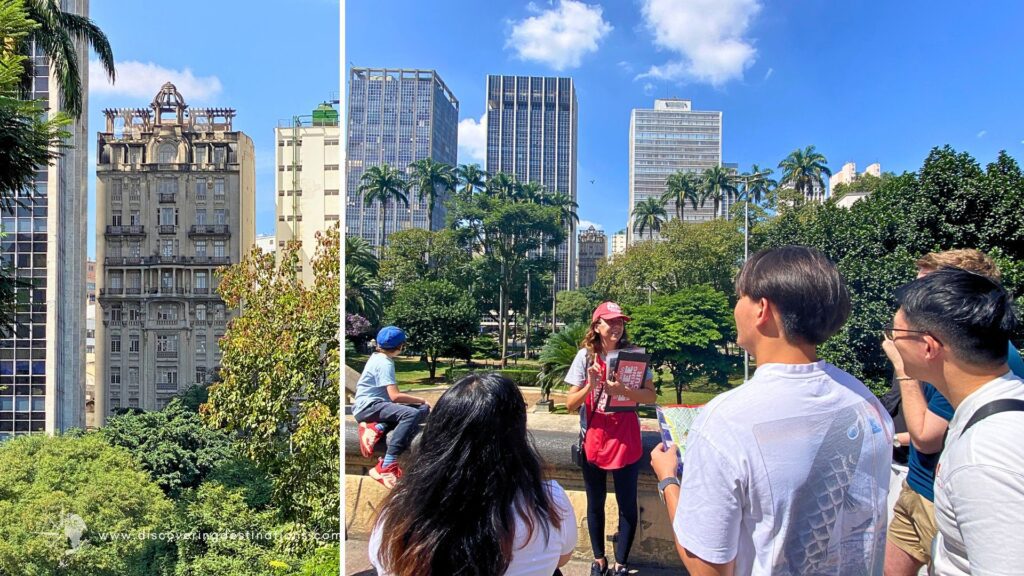
After visiting the São Paulo Municipal Theater, the next stop is Praça Ramos de Azevedo, a square rich in history and architectural beauty.
Established in 1911 alongside the theater, it was renamed in 1928 to honor the architect Ramos de Azevedo.
The square features notable sculptures, including the Monument to Carlos Gomes, created by Italian sculptor Luigi Brizzolara in 1922 to honor the Brazilian opera composer. This monument, also known as the Fountain of Wishes, includes allegorical figures representing Music and Poetry.
Surrounding the square are significant architectural landmarks such as the Viaduto do Chá, the former Mappin buildings, and the Alexandre Mackenzie Building. These structures contribute to the square’s status as a well-known postcard of the city.
While exploring, listen to the guide’s insights and admire the detailed historic buildings and statues of Praça Ramos de Azevedo.
7. Paróquia São Francisco de Assis, São Paulo
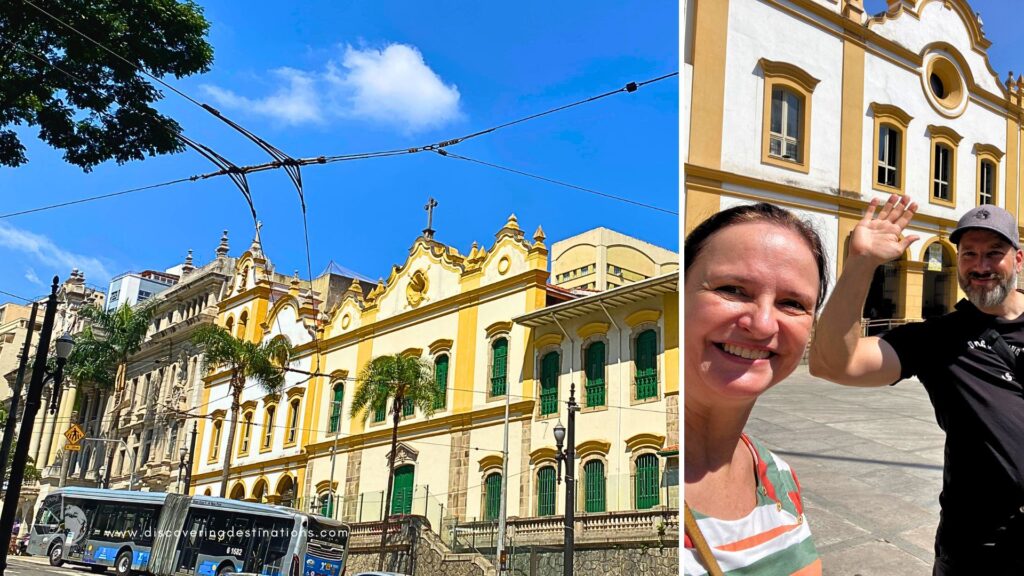
After you go through some of the main points and streets of the historic center of São Paulo, such as Viaduto do Chá and Libero Badaró street, you will get to Paróquia São Francisco de Assis.
The Paróquia São Francisco de Assis, located at Largo São Francisco, 133 – Sé, São Paulo – SP, 01005-010, São Paulo, was officially inaugurated on June 29, 1941.
The local community played a significant role in its establishment, contributing benches, sacred images, and even the bell that calls the faithful to celebrations.
In 1942, under the leadership of Frei Honório Nacke, the Externato São Francisco de Assis was founded, providing education for children in the region for nearly four decades.
Over the years, the parish expanded its facilities to include a large hall for charitable events and social services, reinforcing its role as a center of faith and community in Vila Clementino.
For more details and additional information, visit their official website.
8. Padaria Santa Tereza, the oldest bakery in Brazil
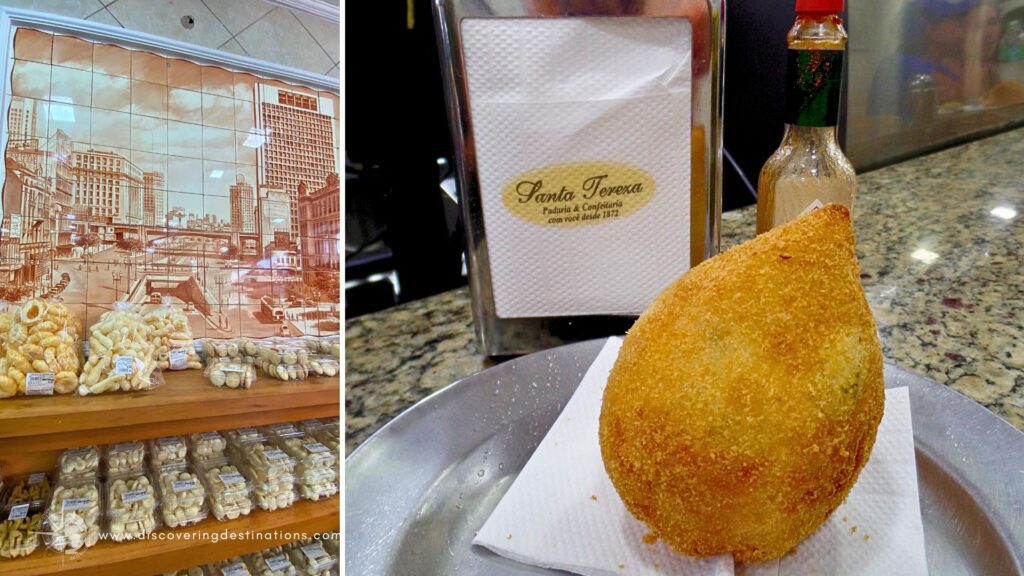
During the SP Free Walking Tour, there’s no official stop for lunch, but participants are treated to a quick snack break at Padaria Santa Tereza, often considered the oldest bakery in Brazil.
This historic bakery has been serving locals and visitors for decades, offering a blend of traditional Brazilian flavours and warm hospitality.
The padaria is typically bustling with activity, so with just about 30 minutes to spare, here are our top recommendations for what to try:
- Coxa Creme: A creamy chicken-filled croquette, coated in a golden, crispy crust. It’s the perfect mix of crunchy and savory.
- Pão de Queijo: Brazil’s beloved cheese bread, made with tapioca flour and cheese, creating a chewy, cheesy delight.
- Brigadeiro: A classic Brazilian sweet, this chocolate truffle is made with condensed milk, cocoa, and butter, then rolled in chocolate sprinkles. On our second visit, we were even gifted a complimentary brigadeiro to enjoy!
Before you leave, grab a biscoito de polvilho (a light, crunchy snack made from tapioca starch) for the road—it’s a quick and satisfying treat.
If you have time to return later, take a seat and savor more of their menu. The bakery often hosts live Brazilian music, adding to the charming atmosphere. Padaria Santa Tereza is not just a stop for snacks; it’s a delightful taste of São Paulo’s culinary history. Click here to learn more.
9. Sé Cathedral and Praça da Sé, São Paulo
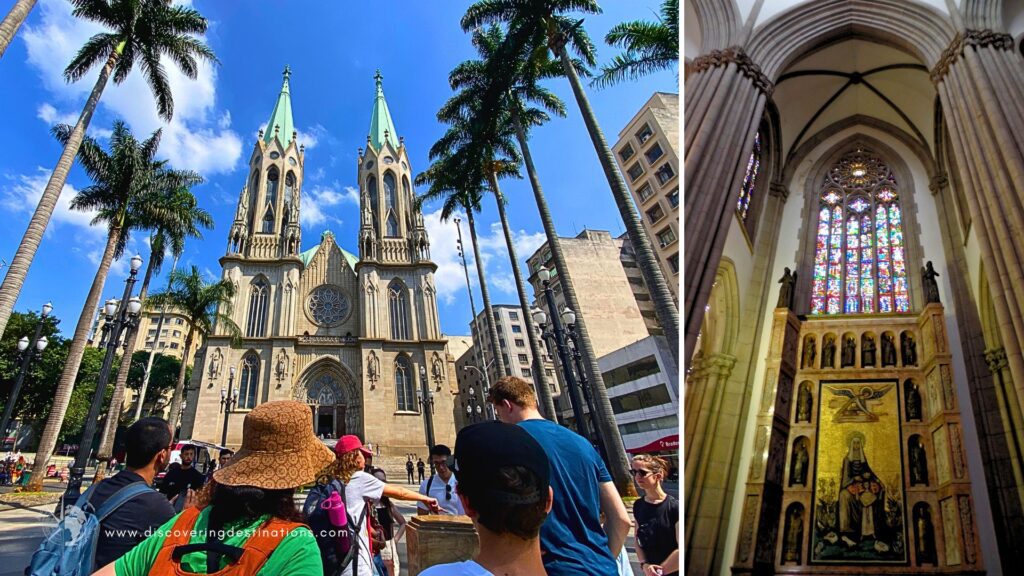
After a snack break, visit the majestic São Paulo Cathedral, or Catedral da Sé, located in Praça da Sé. This main cathedral of São Paulo features stunning neo-Gothic architecture and a serene interior, making it a city icon.
Highlights of São Paulo Cathedral:
- Architectural Splendor: The cathedral’s neo-Gothic design includes columns with intricate details inspired by Brazil’s diverse fauna and flora.
- Crypt: Beneath the main altar lies the crypt, serving as the final resting place for several notable Brazilian figures, including:
- Cacique Tibiriçá: one of São Paulo’s founders and a key ally in the early interactions between Indigenous peoples and European settlers.
- Father Diogo Feijó: A key political and religious leader.
- Bartolomeu de Gusmão: An early pioneer in aviation.
- Praça da Sé and the ‘Marco Zero‘: Directly in front of the cathedral is Praça da Sé, where you’ll find the ‘Marco Zero’ of São Paulo—a monument marking the city’s central point from which all distances are measured.
Extra Visitor Tips:
- Safety: Stay close to your group at Praça da Sé and remain alert, as pickpocketing can happen. A visible police presence during our last visit added to our sense of safety.
- Exploration: The SP Free Walking Tour may skip the cathedral’s interior, but we recommend returning to see its architecture and crypt.
For more detailed information, including visiting hours and special events, please refer to the official website of the Archdiocese of São Paulo.
10. Pateo do Collegio, São Paulo
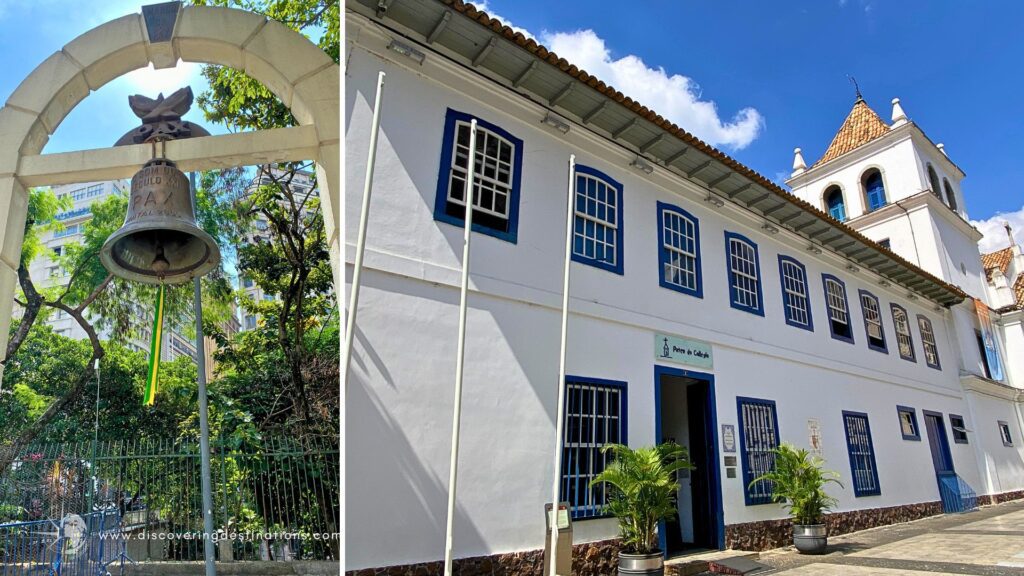
The Pateo do Collegio, located in São Paulo’s historic center, is a significant cultural and religious complex managed by the Society of Jesus. It marks the city’s founding site and offers visitors a glimpse into its rich history.
The complex features the Church of São José de Anchieta, museums, and a library showcasing the Jesuits’ legacy in Brazil. Click here to learn more.
A notable feature within the Pateo do Collegio is a bell that, according to local legend, brings prosperity to those who ring it.
Visitors often partake in this tradition, adding a personal touch to their historical exploration. Check our YouTube Travel vlog to learn more!
For more detailed information and planning your visit, you can consult the official website of the Pateo do Collegio.
11. Banco do Comércio e Indústria de São Paulo
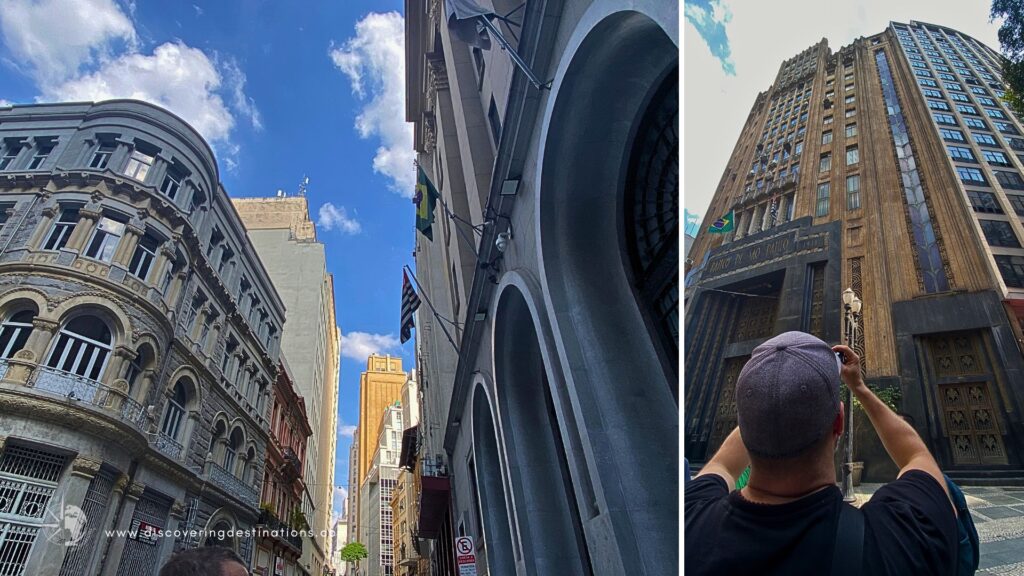
After visiting the Pateo do Collegio, we headed to São Paulo’s historic Old Financial District, a fascinating area that once served as the economic heart of Brazil.
This district is home to several iconic buildings that reflect the city’s growth and importance in commerce and finance.
Highlights of the Old Financial District
- Banco do Comércio e Indústria de São Paulo: This prominent building reflects São Paulo’s vibrant banking history and showcases the grandeur of its financial boom era.
- Santander Building (Edifício Altino Arantes): This iconic skyscraper features a rooftop deck with breathtaking views of São Paulo. It also has a café and bar.
Extra Tip: Visit the Bar do Cofre
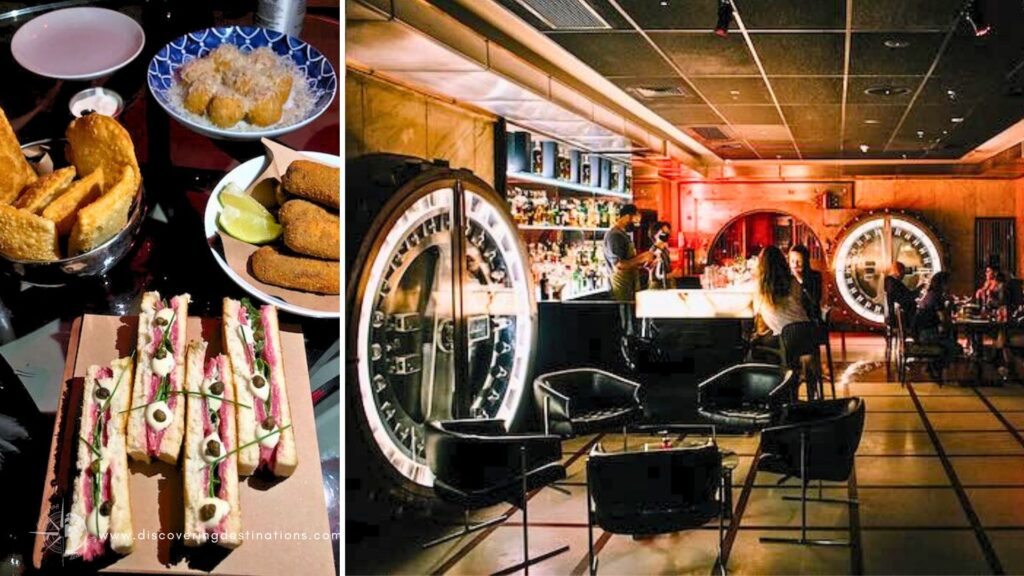
For a unique experience, consider visiting SubAstor Bar do Cofre, located in the basement of a renovated bank vault. The bar offers a one-of-a-kind ambiance, blending history with modern design.
- Planning Your Visit: If you prefer to plan ahead, reservations can be made through their official website. However, if you’re like us and decide to visit spontaneously, arriving early is key! We visited on a Saturday, just as they opened at noon. By arriving at 11 AM, we secured a spot and were among the first to enjoy the space.
Exploring São Paulo’s Old Financial District feels like stepping back in time while enjoying modern comforts. It’s a must-visit!
12. Martinelli Building, São Paulo
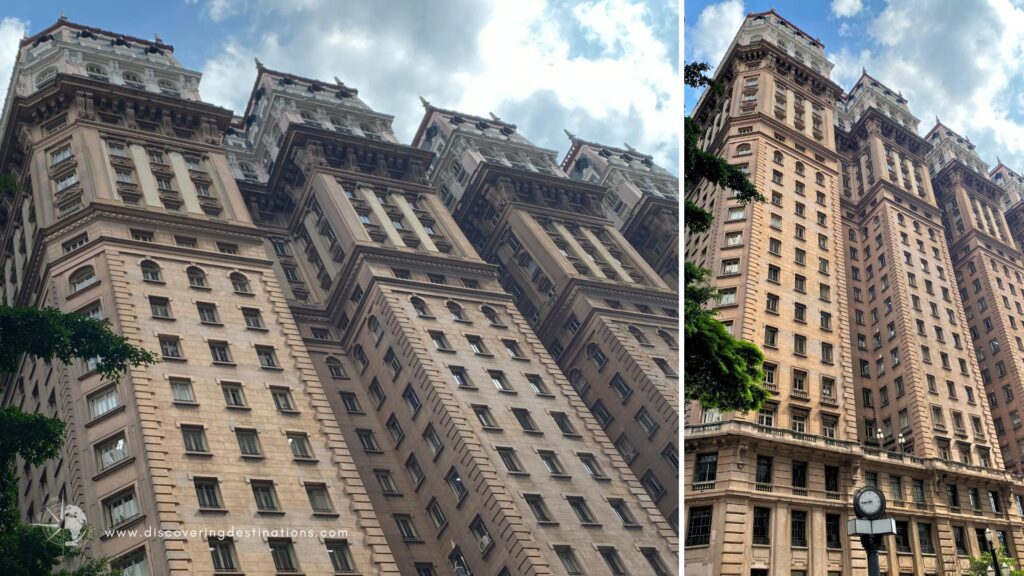
The Martinelli Building, located in São Paulo’s historic center, stands as a testament to the city’s architectural evolution. Conceived by Italian immigrant Giuseppe Martinelli, construction began in 1924 and concluded in 1929, making it Brazil’s first skyscraper.
The building’s design features a blend of classical and modernist elements, with luxurious finishes such as Carrara marble staircases and Belgian glass.
Over the years, the Martinelli Building underwent many changes, including being called ‘Edifício América’ during World War II. It faced decline in the mid-20th century but was later restored to its original grandeur.
Today, it houses municipal offices and offers educational visits for those interested in its rich history.
13. Mosteiro de São Bento, São Paulo
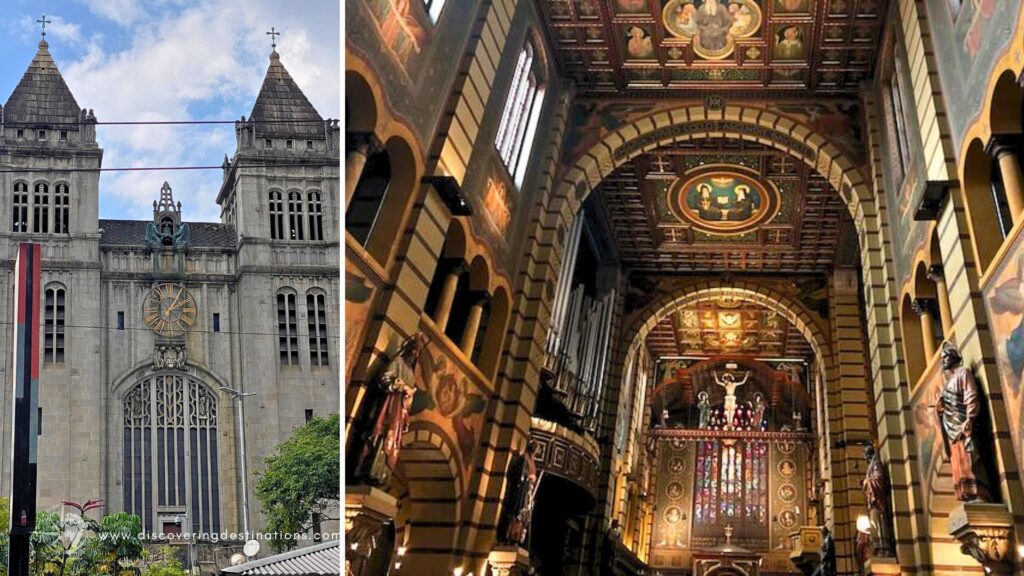
The Mosteiro de São Bento, located in São Paulo’s historic center, is a significant religious and cultural landmark with a rich history dating back to its founding on July 4, 1598.
The complex encompasses the Basílica Abacial de Nossa Senhora da Assunção, the monastery itself, and the Colégio and Faculdade de São Bento.
The monastery is renowned for its Gregorian chant masses, offering a serene and contemplative experience for visitors. Eli and her family have attended these Sunday ceremonies, where the monks’ chants create a profound spiritual atmosphere.
After the service, the monastery offers artisanal products like bread, made by monks, for visitors to enjoy.
Check the official website for updated information on mass times and available monastery products.
Where to eat at Historic Center of São Paulo
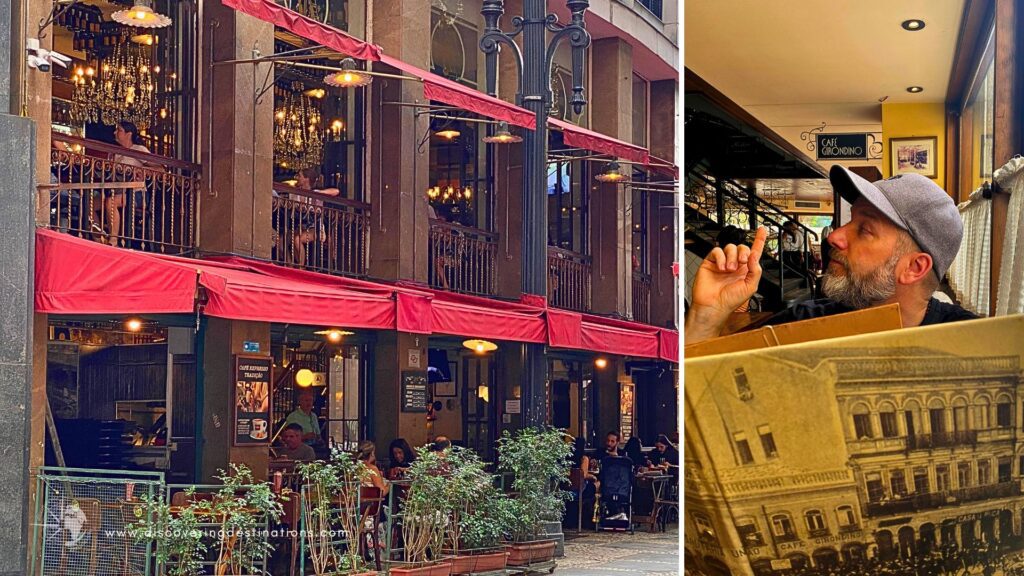
The SP Free Walking Tour includes a quick snack stop at Padaria Santa Tereza, Brazil’s oldest bakery, where you can enjoy a tasty treat like a coxa creme or pão de queijo. However, after hours of walking, you might be ready for a full meal or a refreshing drink to recharge.
São Paulo’s historic downtown offers many places with unique Brazilian snacks, meals, and drinks.
Below are some of our favorite recommendations:
As well as a few places still on our “must-visit” list for an authentic São Paulo Old Town experience:
- Mercadão de São Paulo: Known as the Municipal Market of São Paulo, this foodie paradise is famous for its mortadella sandwich and tropical fruit vendors. Grab a pastel de bacalhau (salted cod pastry) or enjoy fresh juice while exploring the bustling market atmosphere.
- Bar Salve Jorge: Located in a charming part of the historic center, this bar combines rustic décor with traditional Brazilian snacks and cold draft beer. It’s a great spot for a casual meal or happy hour, offering classics like coxinhas and hearty dishes.
- SubAstor Bar do Cofre: Tucked away in the vault of a former bank, this bar features a unique ambiance and expertly crafted cocktails. Pair your drink with modern twists on Brazilian dishes for a chic and relaxed evening.
- Café Girondino: Near Pateo do Collegio, this historic café offers a cozy atmosphere perfect for enjoying a strong Brazilian coffee or, a snack like empadas or brigadeiros. It’s an ideal place to take a break after exploring.
- A Casa do Porco Bar: A must-visit for food lovers, this restaurant is internationally acclaimed for its innovative pork dishes. Try their Porco San Zé sandwich or pork sushi. Extra tip, be sure to arrive early or make a reservation as it’s always popular.
- Bar dos Arcos: Beneath the Teatro Municipal, this bar’s underground setting features stunning early 20th-century arches. Their creative cocktails and menu make it a perfect spot for a memorable evening drink or dinner.
- O Boteco do 28: Located in the Santander building, this spot offers a relaxed vibe with spectacular rooftop views of São Paulo. Enjoy finger foods paired with a refreshing caipirinha while taking in the cityscape.
Travel Essentials for the São Paulo Free Walking Tour
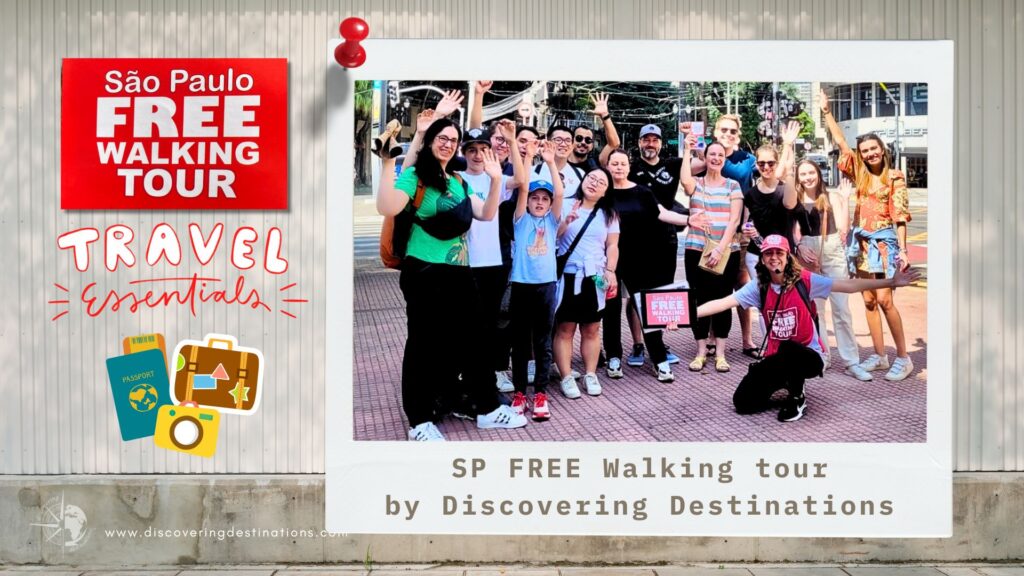
Preparing for the São Paulo Free Walking Tour is key to having a safe, comfortable, and enjoyable experience.
Whether you’re navigating the bustling streets, soaking in the city’s rich history, or dealing with São Paulo’s unpredictable weather, packing the right items can make all the difference.
Here are 10 essentials to bring along:
- Comfortable Walking Shoes: You’ll be on your feet for hours exploring São Paulo’s historic center, so supportive and comfortable shoes are a must.
- Reusable Water Bottle: Stay hydrated during the tour, especially under São Paulo’s warm sun. A reusable bottle is eco-friendly and easy to carry.
- Venture 4th Travel Money Belt: Keep your valuables secure with a discreet travel money belt. It’s lightweight and perfect for storing cash, cards, and identification.
- Credit Card Protector or RFID-Blocking Sleeves: Protect your credit cards from unauthorized scanning with RFID-blocking technology. Safety first!
- Sunscreen: Protect your skin from São Paulo’s strong sun rays, especially when walking through open squares and historic streets.
- Rain Poncho or Umbrella: São Paulo’s weather can be unpredictable, especially in the summer. A rain poncho is a practical choice for staying dry without overheating like you might with a rain jacket.
- Sunglasses: Shield your eyes from the bright sun while exploring the city’s vibrant streets and landmarks.
- Snacks: While the tour offers a quick stop at Padaria Santa Tereza, it’s always a good idea to bring a small snack for extra energy.
- Portable Charger: Ensure your phone stays charged for navigating, snapping photos, and staying connected during the tour.
- Hat for the Sun: Protect your head and face from the strong sun during the tour. A lightweight, breathable hat is perfect for staying cool and shaded.
Staying Connected: Internet in Brazil

In today’s travel landscape, staying connected is essential—whether for navigation, staying in touch with loved ones, or sharing your adventures online.
During our time in Brazil, we’ve been using the Airalo eSIM card, and we absolutely recommend it! It’s convenient, affordable, and works seamlessly, providing reliable coverage across the country.
- Easy Setup: Purchase and activate your eSIM online before your trip, so you’re connected as soon as you arrive.
- Affordable Plans: Choose from a variety of data plans to suit your needs.
- Wide Coverage: Works well across urban and rural areas in Brazil, keeping you connected with essential apps like WhatsApp, Google Maps, and Waze for seamless communication and navigation.
- No Physical SIM Needed: Ideal for travelers who want to avoid the hassle of swapping SIM cards.
- Referral Rewards: Share your Airalo referral code with friends, and you’ll both benefit! Your friend gets a discount, and you earn cashback AirMoney that can be accumulated and used for future trips.

Pro Tip: Take advantage of Airalo’s referral program to save even more on staying connected during your travels!
Use our Referral Code: ELISAN4049 at checkout when making your first Airalo purchase, and you’ll receive a cashback of up to CAD $4.50, depending on the current promotion.
Start saving and stay connected on your next adventure!
You can also use our promo code on your first Airalo purchase until December 31, 2024 to enjoy even more savings! 🎉
- Promo Code: NEWTOAIRALO15 (Save 15% on your first purchase, valid until the end of the year).
Conclusion: Discovering São Paulo’s Historic Charm
The São Paulo Free Walking Tour is an amazing way to dive into the rich history, stunning architecture, and vibrant culture of the city’s Old Town.
From iconic landmarks like the Sé Cathedral and Teatro Municipal to tasty stops like Padaria Santa Tereza, this tour is packed with unforgettable moments and local charm.
We hope this blog inspires you to explore São Paulo and discover its hidden gems and must-see spots. Remember to pack your essentials, follow the guide’s tips, and take time to revisit some of the incredible places we’ve mentioned for an even deeper experience.
If you’re excited about exploring São Paulo or Brazil, we invite you to continue the journey with us!
Check out our other blogs for more travel tips and stories, and don’t forget to watch our vlogs for even more inspiration.
Let us know in the comments what you’re most excited to see—happy exploring!

Lia & Serge from Discovering Destinations
Discovering Destinations: Travel Tools & Planning Tips
Traveling is exciting—but a well-planned trip can make the experience smoother and more affordable. We’ve learned through years of travel that starting early helps you find the best deals, avoid stress, and make the most of your time.
Use trusted tools to compare prices, read real traveler reviews, and book with confidence. From flights and hotels to eSIMs and local tours, these platforms have helped us—and now they can help you too.










